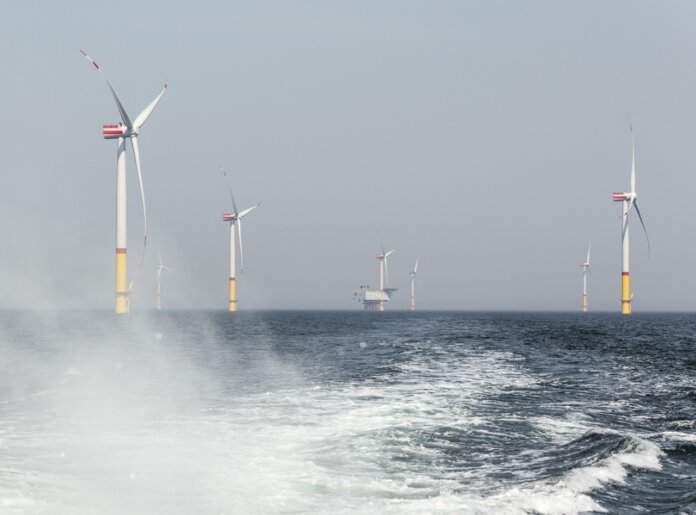RWE Offshore Wind Poland, a subsidiary of RWE Renewables, has chosen UL Solutions as the certifier for its F.E.W. Baltic II offshore wind farm. UL Solutions will certify the design fundamentals of the 350 MW project, which will be built in the Polish Baltic Sea about 55 kilometers from the shore, covering an area of 41 square kilometers, at a water depth of 30-50 meters.
“We are pleased to have chosen UL Solutions, an experienced certification company for our F.E.W Baltic II offshore wind project,” says Lukas Prietz, project director of the F.E.W. Baltic II Wind Farm Project at RWE Renewables. “The implementation of the construction process and subsequent operation of F.E.W. Baltic II will be carried out in accordance with the applicable global standards, in compliance with the applicable national and international legislation.”
“As evidence of knowledge sharing, the entire process will take place in consultation with the Polish Register of Shipping,” continues Prietz. “With UL Solutions we are contracting a global market leader that has been operating in Poland for many years, relying on domestic engineers and experts. This fits in with RWE’s ongoing local content strategy, which is based on cooperation with domestic companies and specialists.”
UL Solutions will commence the certification in accordance with the provisions of the Maritime Safety Act and international IEC regulations and procedures. The entire process will take place in consultation with the Polish Register of Shipping (PRS), which has long experience in working with projects in the Baltic Sea. The cooperation of UL Solutions with PRS demonstrates how important Polish companies are in the process of building and operating the F.E.W. Baltic II offshore wind farm.
“The construction of offshore wind farms is particularly important to accelerate the energy transition. With energy generated in the Baltic Sea, it will be easier to reduce dependence on fossil fuels, towards green energy sources. By implementing the F.E.W. Baltic II project, we will significantly contribute to this positive change while accelerating domestic economic development through collaboration with Polish suppliers and subcontractors,” adds Prietz. “Poland is one of the most attractive offshore growth markets for our company. That’s why we don’t want to stop at the F.E.W. Baltic II project and have applied for all 11 areas made available for further offshore wind farms by the Polish government.”
“Power produced by offshore wind is key to the transition from reliance on fossil fuels to renewable energies,” states Joern Gerlach, engineering manager in the renewables energy team of the UL Solutions Energy and Industrial Automation group. “Confirming that offshore wind technologies can support the power grid while optimizing energy production is crucial to accelerating the development of wind farms and Poland’s green energy transition. We’re proud to be collaborating with RWE to help advance the adoption of safer and reliable wind energy.”
When fully operational, the F.E.W. Baltic II wind farm will be able to produce enough green electricity to meet the needs of around 350,000 Polish households. In addition to offshore wind, RWE operates onshore wind farms in Poland with a total installed capacity of more than 420 MW. This year, the sixteenth onshore wind farm in the company’s portfolio, Rozdrażew (16.8 MW), was connected to the grid. Construction of the Wierzchlas project (7 MW) and Żnin (48 MW) are underway. RWE’s wind farms Dolice (48 MW) and Lech Nowy Staw III (12 MW) are waiting for their licenses. The Lech Nowy Staw III wind farm in the Pomeranian province will soon begin producing energy for several breweries operating in the country.




